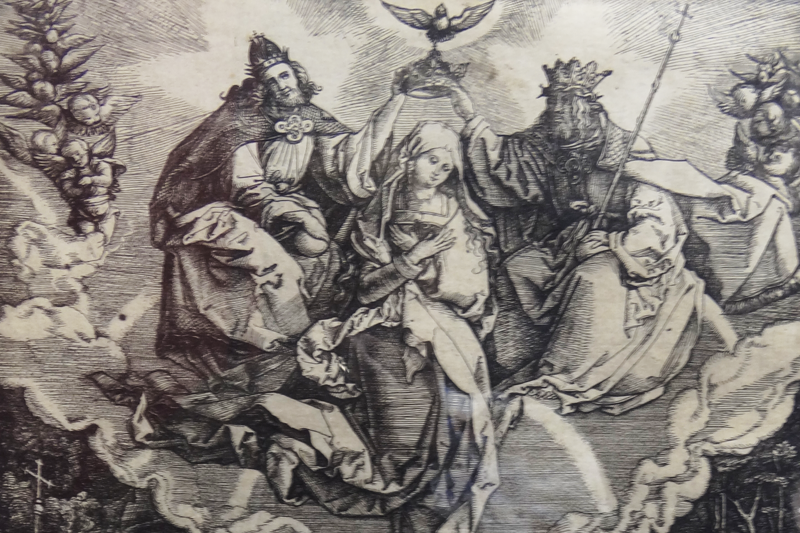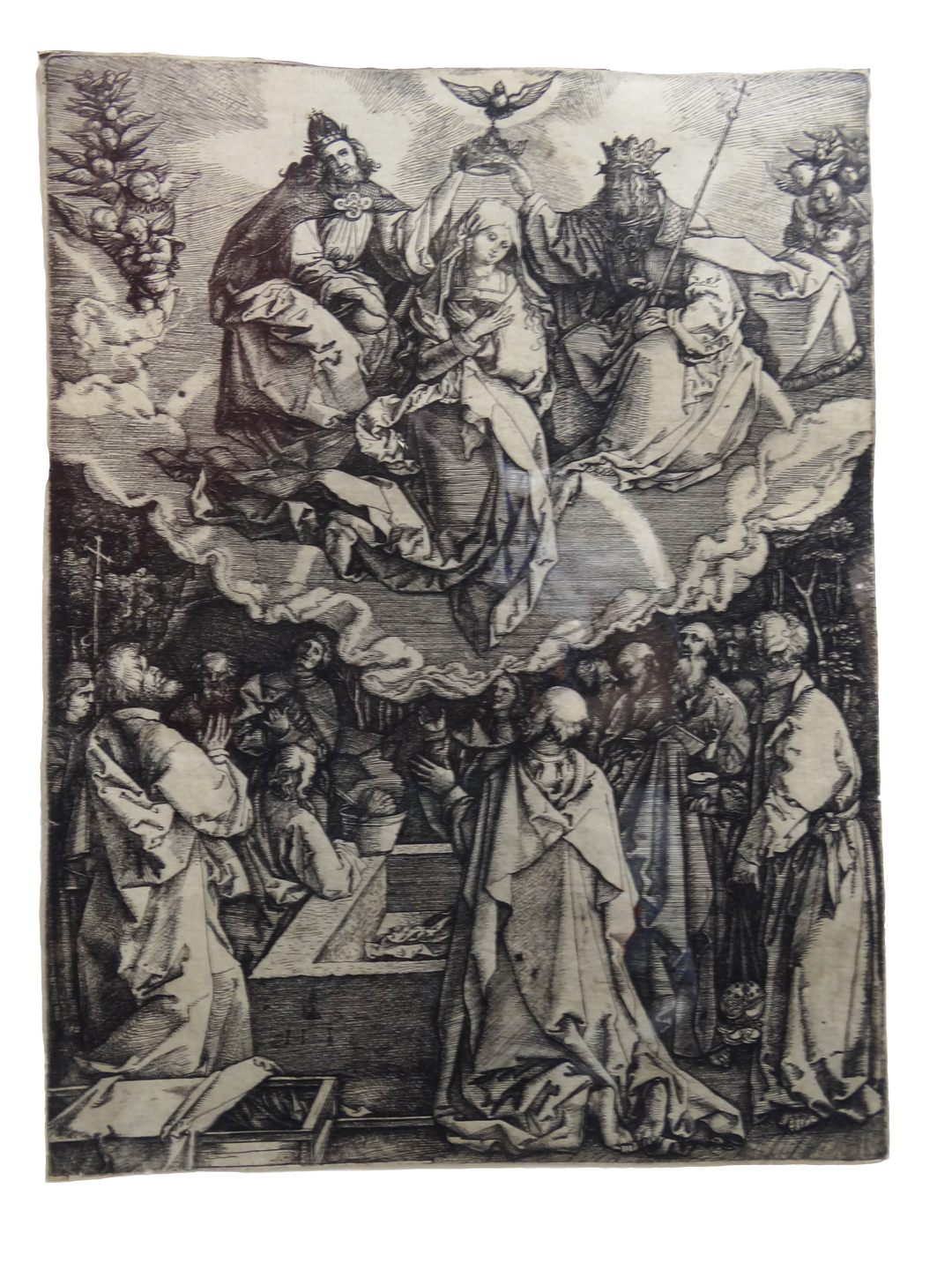Blogs

A Pairing of Assumption Art and Poetry
By Ann Zlotnik
A Popular Subject
Celebrating the Assumption of the Blessed Virgin into heaven — body and soul — is a feast day the Catholic Church refers to as a solemnity, the highest-ranking class of feast day. Over the centuries, many artists have depicted the Assumption event, and the Marian Library has several depictions in its holdings, including this engraving by German Renaissance artist and printmaker Albrecht Dürer.
Dürer (1471-1528), the son of a goldsmith, was an apprentice at a workshop that produced woodcut illustrations. He became an accomplished painter, draftsman and printmaker. According to this article by Jacob Wisse on the Metropolitan Museum of Arts website, Dürer “revolutionized printmaking, elevating it to the level of an independent art form.” One of his most famous series of woodcuts was “Life of the Virgin.” This engraving titled “The Assumption and Coronation of the Virgin” is from that series.
Ponder the detail of this engraving. Note the Holy Trinity and the crown ready to be placed on Mary’s head; the humble position of her bowed head and crossed arms; the serene look on her face; the groupings of angels and disciples who are observing the wonder of this immense moment.

Pair it with Poetry
The poem “The Praises of Mary” by St. Anthony of Padua can serve as a reflection along with this artwork. The last stanza reads:
Today the Lord glorifies that place,
since He has exalted Mary
above the choirs of the angels.
That is to say,
the Blessed Virgin,
who was the dwelling of the Savior,
has been assumed bodily into heaven.
— Ann Zlotnik is a graphic designer and the communication and creative coordinator for the University Libraries and the Marian Library at the University of Dayton.
